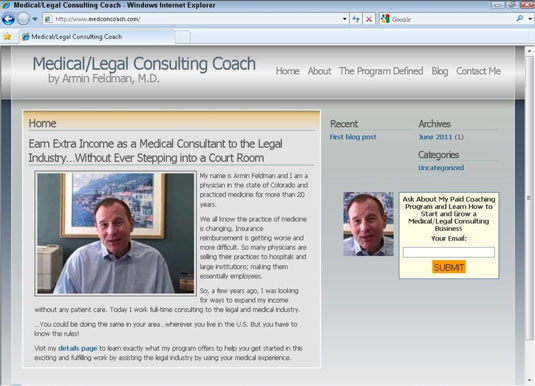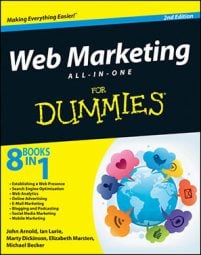Squeeze pages are short and simple marketing web pages that introduce additional content available to readers — but only if they’re willing to register by providing an e-mail address.

A squeeze page is a great way to accept targeted traffic for a very specific topic of interest and inspire visitors to register to be on your mailing list. Commonly, more than 20 percent of your first-time visitors to a squeeze page will complete and submit the opt-in form. Some points to keep in mind while creating a squeeze page include the following:
Great headlines are critical. Going without a headline on a squeeze page or having one displayed that’s not relevant to the topic is a traffic killer.
Show a good photo of yourself. Conversion rates for a squeeze page always increase when you have a good photo of yourself (or whoever is writing to the visitor).
Write as if you’re talking to someone one on one. Squeeze pages are very personal. Take away all the corporate flair, and just talk to your visitors as if they’re right in front of you.
List the benefits of why your visitors should opt in to your list. What will they get exactly, and why is it worth giving up their e-mail address to receive?
Promise to give away something after they do sign up. This could be a free report, e-course, or consult; sound files; or a coupon. Be creative. When you provide something of true value for free, an impressed subscriber will consider more strongly that your for-pay offer must have exceptional value as well.
Keep your subscription form to two fields — Name and E-mail Address: Every additional field beyond those two will reduce your number of opt-ins substantially.
The term opt in is a rather one-sided agreement. The website visitor agrees to give you an e-mail address so that he can get exactly what you were offering for free. It does not give you the permission to mercilessly barrage the subscriber with e-mails day and night until the end of time.
Think of every e-mail you send to your list to be like a fresh batch of chocolate cookies. If it doesn’t taste great every time, the subscriber can unsubscribe anytime.

